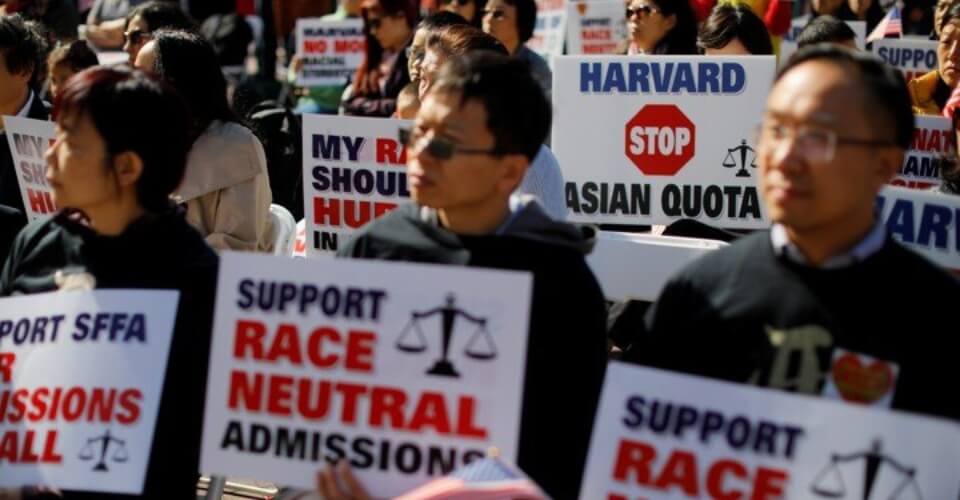The war waged by SFFA against affirmative action in universities has made current and former Harvard students come out in support of the current system. A coalition of graduates from Harvard voiced their strong support for Harvard, but it was to no avail.
The conservative supermajority at the Supreme Court has pushed the decision to favor SFFA. President Joe Biden has openly denounced the decision and called for action to solve the crisis. Former president Barack Obama admitted that the policy was not perfect, but it allowed students like him and his wife to prove where they belonged.
Donald Trump, however, has exclaimed that it is a great success for America as people with ability will finally be rewarded.
So why does America have polarizing views on affirmative action? Read on to find out more about the topic.
What Is Affirmative Action at Harvard? Easily Explained
Affirmative action consists of government-mandated, approved, and voluntary private programs that grant special consideration to groups that have been historically excluded. The program focuses on education and empowerment of racial minorities. It ensures that public institutions like universities, hospitals, police forces, and others are representative of the populations they serve.
In the US, many factors are taken into consideration when a university accesses an individual. These factors include not only the applicant’s grades but also race, ethnicity, native language, social class, geographical origin, parental attendance at the university, and gender.
In the past, Supreme Court and the lower courts have ruled that universities can continue considering race as a factor for admission so that a diverse community can be created on campus.
What Is the Affirmative Action at Harvard Case About?
Students for Fair Admissions, Inc. (SFFA), a non-profit founded by Edward Blum, has launched a lawsuit against race-conscious admissions in universities. Harvard and the University of North Carolina are the named defendants. However, the court’s decision will affect all educational institutes worldwide that consider race as a factor during the admission procedure.
Racial representation at universities will decline in the future as preferences have been removed. The proportion of African-American or Hispanic students will decline on campus. Harvard would not be able to reach its racial diversity goal like before.
What Was the Outcome of the Harvard Affirmative Action Case?

The Supreme Court has ruled that affirmative action policies at Harvard University and the University of North Caroline are illegal. The decision will drastically limit the consideration of race as a factor during the admission procedure. The same decision will also affect all universities, not just the two defendants. Six judges argued that affirmative action violates the equal protection clause of the 14th Amendment of the Constitution.
The new conservative supermajority among the nine judges has changed the decision the Supreme Court has supported for the last 50 years. The conservatives have a majority by 6-3, and Chief Justice John Robert has acknowledged his preference for race-neutral admissions.
President Biden denounced the decision and stated in a news conference that he would call upon the Education Department to determine methods for ensuring the preservation of racial diversity in universities. The president even stated that the decision was not made by a “normal court,” referencing the conservative majority.
What Will Happen Next?
Affirmative action is not a dominant force in the admission procedure, so the majority of the student body will remain unaffected by the new ruling. We are only talking about some of the elite US colleges whose diplomas are irreplaceable credentials for high-achieving individuals.
Universities like Harvard or Yale produce the top 1 percentile of students who later go on to occupy prestigious positions in the country. To put things into perspective, these universities have provided 89% of the current Supreme Court.
As black and Hispanic students, as well as other racial minorities, have been denied equal opportunities to earn a degree, the current ruling will make the problem even worse. This isn’t the first time that colleges have been legally prohibited from using race as a determining factor.
However, all the past examples have shown a quick decline in admission rates for Black and Hispanic students.
The consequences are far more long-lasting than it seems. The argument against affirmative action claims that the system harms students by admitting them to colleges where they can’t keep up academically. The new ruling might help to send students to colleges where their intellect is matched with the curriculum so they can thrive better.
The argument was demolished when California banned affirmative action in 1996, and representation of the specified groups immediately dropped. The students were shut out of high-earning careers.
Selective colleges that apply affirmative action have unmatched resources to help students learn, graduate and even build a social network. In California, students of color were shut out of such networks.
Other effects of the Supreme Court decision will include increasingly homogeneous student bodies and diminished educational experiences. The long-term impact is a fragmented nation where young people will no longer understand those from different backgrounds to theirs.
All eyes are now on the universities to set an example of how they will move forward. Comment down below to tell us which side you are supporting and if you think the decision will replenish or damage America’s student body.

